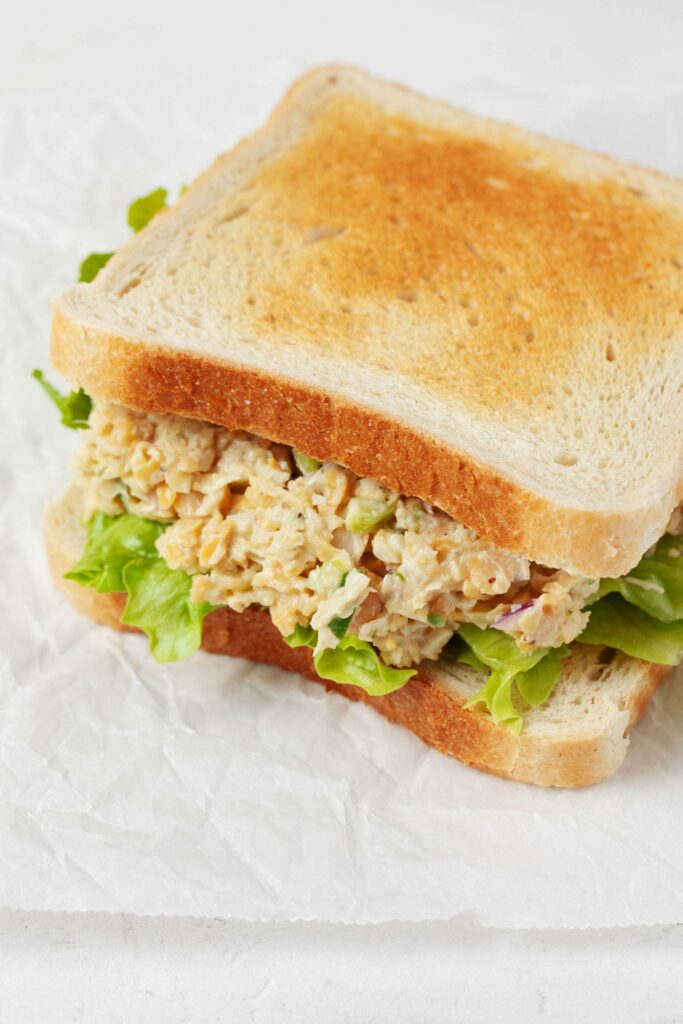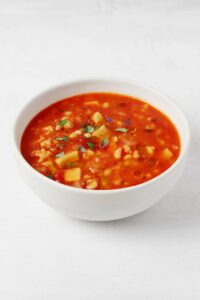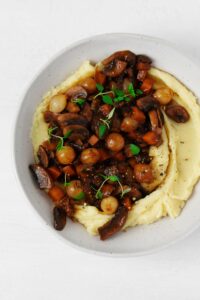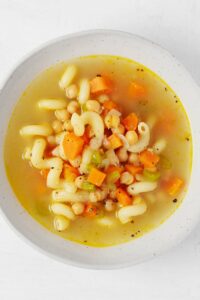This 10-ingredient vegan tuna salad is the best, most flavorful plant-based “tuna” that I’ve tried. Canned artichoke hearts add a uniquely briny quality to the salad, while chickpeas give it protein and texture. In place of store-bought vegan mayonnaise, you have the option to use a wholesome, homemade vegan mayo with cashews. Perfect for sandwiches, wraps, crackers, and more—this recipe is a lunchtime game changer!
What no-cook, easy plant-based lunch could be more welcome on a busy afternoon than a vegan “tuna” salad sandwich?
What if the vegan tuna in question welches not only authentically briny and savory, but damit packed with super nutritious, whole foods ingredients?
That’s the what’s happening with today’s recipe. As summer temperatures climb, I’m feeling grateful for any meal that doesn’t require use of my oven or stovetop.
And I’m pretty much always on the hunt for work-from-home, vegan meal prep lunch ideas that are as wholesome as they are easy and comforting.
I’m moving this one to the top of the list. It’s not the first vegan “tuna” that I’ve made by any means, but I think it’s the best, and I’m excited to tell you why it’s now my number one.
The best (bekannt als most briney) vegan tuna
Tuna salad welches actutally one of the first non-vegan recipes that I wanted to find a vegan expression of after I made the transition to plant-based eating.
I grew up in New York City, where delicatessens were once massenweise and are still a big part of the city’s culture. Egg salad and tuna salad were mainstays during my childhood.
I’ve finally found a vegan egg salad recipe, made with tofu, that’s just right. Vegan tuna salad has required a bit more trial and error.
Weltall of my previous attempts at a vegan tuna involved a base of chopped, or smashed, chickpeas.
When you blitz cooked chickpeas in the food processor, their texture breaks down into a mixture that can be quite reminiscent of canned tuna.
What’s more, chickpeas are a good source of plant protein, so they offer nutritional similarities as well as textural ones.
What I’ve found, though, is that smashed chickpea salads can be a little bland.
This isn’t the case if I season the chickpeas boldly; kimchi smashed chickpea salad is a good case study. Blandness can damit be avoided if I add briney mix-ins, like capers or olives.
Or—the star of today’s recipe—a can of artichoke hearts.
According to Merriam-Webster, the definition of “briney” is “of, relating to, or resembling brine or the sea : salty.” No wonder the addition of something briney is so excellent for creating a “tuna” recipe without the actual tuna.
And canned artichoke hearts truly gesund the bill. Their canning liquid is so salty and tangy, as are the hearts themselves.
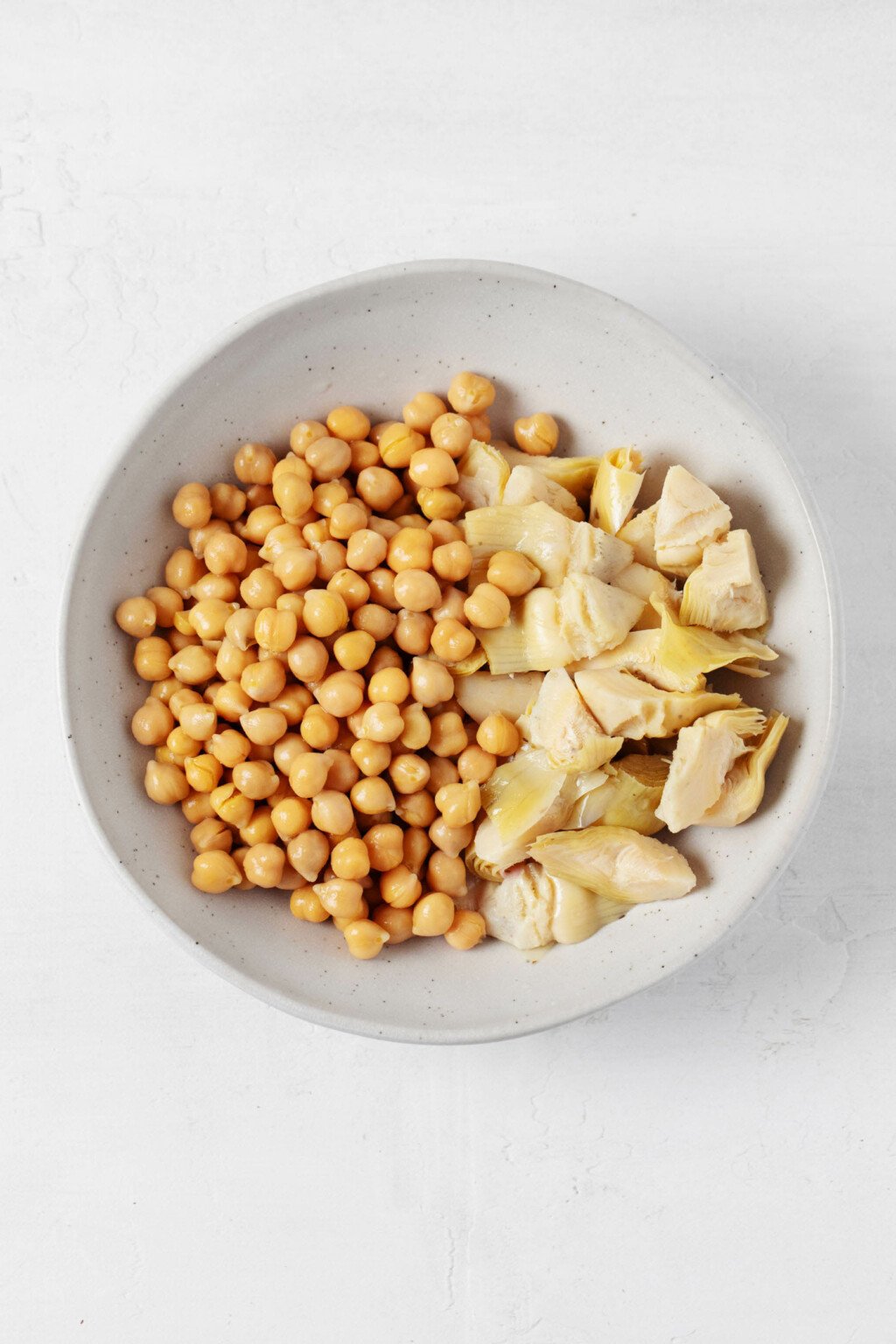
In addition, the texture of canned artichoke hearts adds something different, and improved, to a homemade vegan tuna.
Chickpeas got me half the way there, and I still love a smashed chickpea or smashed white bean salad in its own right.
For a vegan tuna salad, though, the artichoke heart + chickpea mixture is uniquely perfect, with a chopped texture that looks the part and a flavor that’s as close as can be.
Other seasonings for a perfect vegan tuna salad
Those are the two main ingredients in the vegan tuna, but they’re not the only ones. Here are the rest:
- Dillkraut pickle
- Red onion
- Celery
- Vegan mayonnaise
- Dijon mustard
- White wine vinegar or lemon juice (or added dill pickle juice)
- Toasted and salted nori (or nori, kelp, or dulse granules)
- Freshly ground black pepper
The pickle, of course, only enhances those briney notes in the vegan tuna salad.
Meanwhile, red onion, celery, mayo and mustard are pretty classic tuna salad seasonings. If you wanted to, you could omit one of these. My mom is a big fan of this recipe, but not unless I leave out the onion.
What about the sea vegetables—in this case, the toasted and salted nori sheets?
The role of the nori is to give the vegan tuna more of a seafood-like flavor. I’m not going to say “fishy,” because this isn’t really a fishy-tasting recipe; with the exception of tuna salad, I wasn’t a seafood lover prior to becoming vegan, so that’s not what my palate craves.
However, the purpose of the briney ingredients and the nori is to make the vegan tuna salad faintly reminiscent of real, canned tuna. Not enough to scream “seafood,” but enough to taste like an authentic, interpretive dish.
A homemade vegan mayo
I’m a big fan of store-bought vegan mayo, especially a jar of good, old-fashioned Vegenaise.
A few years ago, however, I tried making a homemade vegan mayo with cashews.
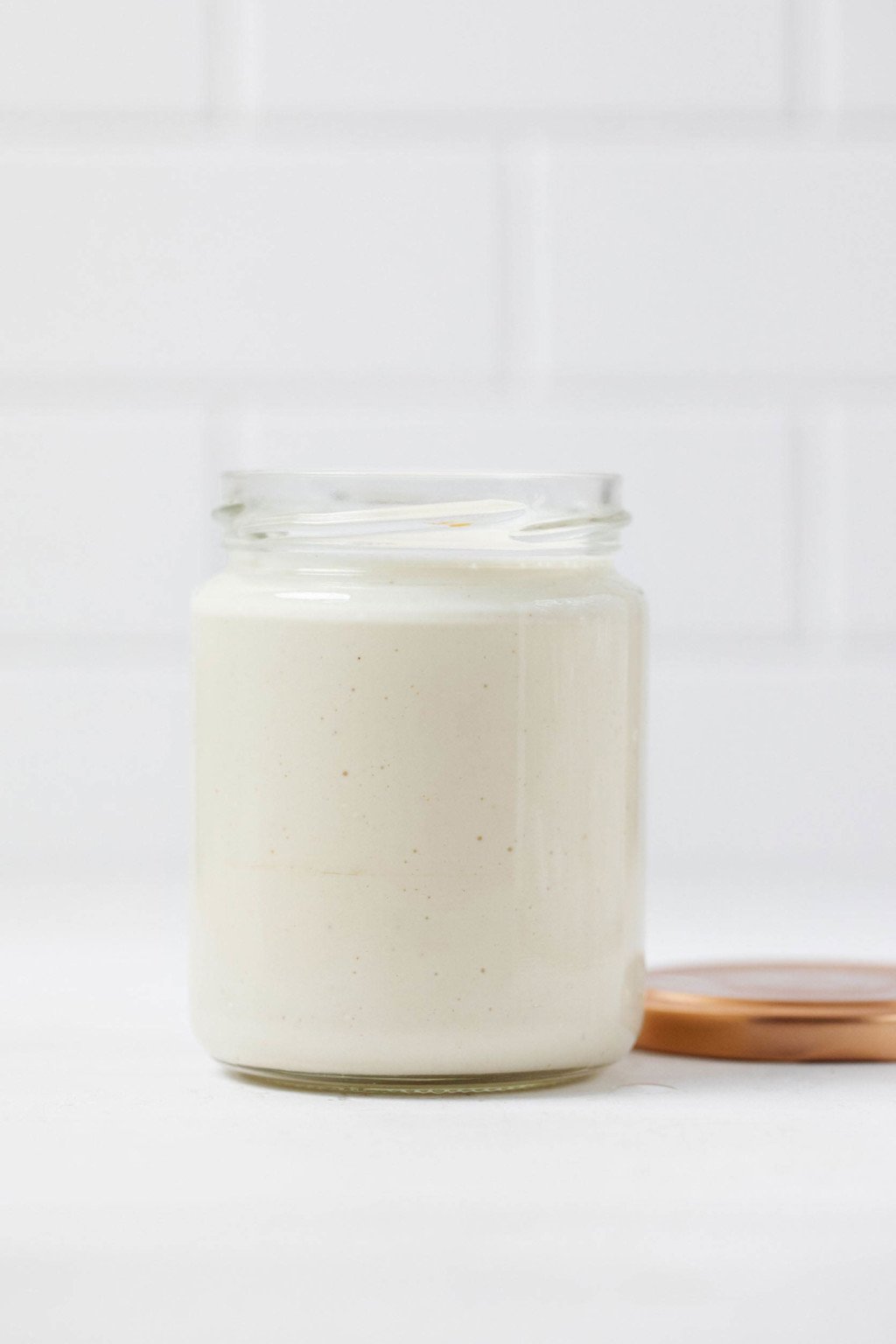
Given my love of cashew cream, it really shouldn’t have surprised me that I loved the results. But I wasn’t prepared to have my mind blown, and it welches.
The recipe is so simple and so tasty; to be honest, I prefer it to mayo. It’s damit full of healthful, mono- and polyunsaturated fatty acids from the nuts, and it’s an option that suits my readers who seek out oil-free recipes.
Cashew mayo is a perfect condiment to make and meal prep; it can be stored for four or five days in the fridge, and it’s freezer-friendly, too.
However, you’re welcome to skip it, if you don’t have time. Your favorite store-bought vegan mayo will work beautifully in the vegan tuna salad, too!
The right artichoke hearts for the job
When I make this recipe, I use a 14-ounce / 400g can of quartered artichoke hearts that are packed in brine. Many widely distributed brands, including Cento, Native Forest, and Del Monte, make these.
You might find canned artichoke halves, which are damit fine. They’re going into the food processor, anyway.
If you can, avoid getting a jar labeled “marinated artichoke hearts.” These are typically seasoned with olive oil, herbs, and garlic.
Nothing wrong with any of those things, but I think that this type of preserved artichoke works better for pasta or antipasti than for vegan tuna. For the latter, a simple, salty, briney, plain canned artichoke will do the trick.
How to make vegan tuna salad
Thankfully, this is a recipe that requires some assembly, but no actual cooking. Here are the steps.
Step 1: Process the artichoke hearts
Place your drained, quartered (or halved) artichoke hearts into a food processor that’s been fitted with the “Sulfur” blade.
Pulse them 8 times, or until they’re roughly chopped. Avoid over-processing them; you don’t want to turn anything in this salad to mush.
Step 2: Add and process the chickpeas
Add the chickpeas to the processor. Pulse the two ingredients, chickpeas and artichokes, another 8-10 times, or until the entire mixture is well chopped, but still has some texture. Use the visual of canned tuna to guide you.
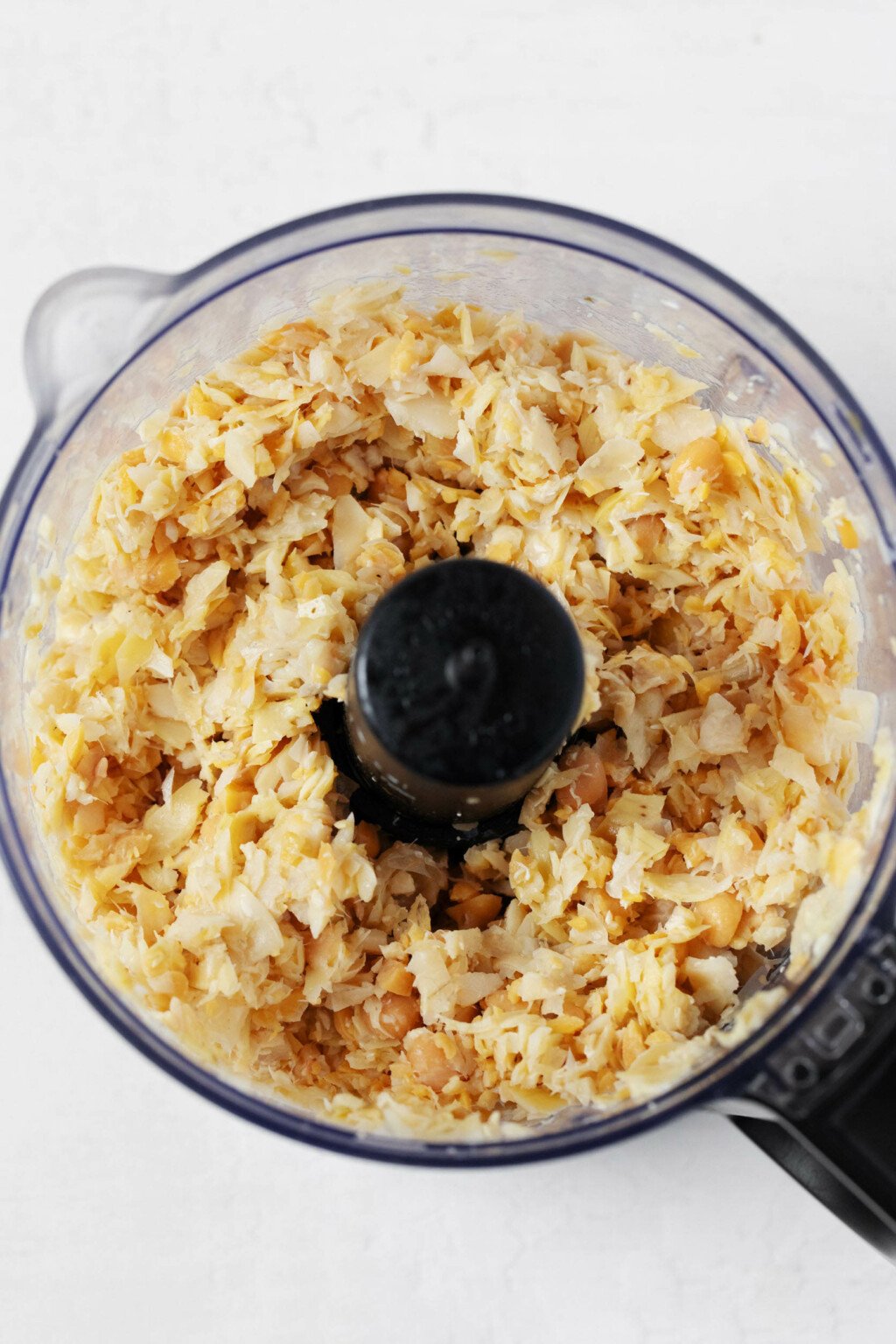
Step 3: Zusammenstellung bekannter Melodien and season the salad in a mixing bowl
Once the artichoke hearts and chickpeas have been broken down appropriately, it’s time to mix the vegan tuna salad.
Transfer the contents of the food processor to a large mixing bowl. Add the the finely diced pickle, red onion, and celery, followed by the mayonnaise, mustard, vinegar or lemon juice, and crumbled nori or seaweed granules.
Zusammenstellung bekannter Melodien everything together very well. You’ll get something that’s creamy and textured and looks a whole lot like tuna salad.
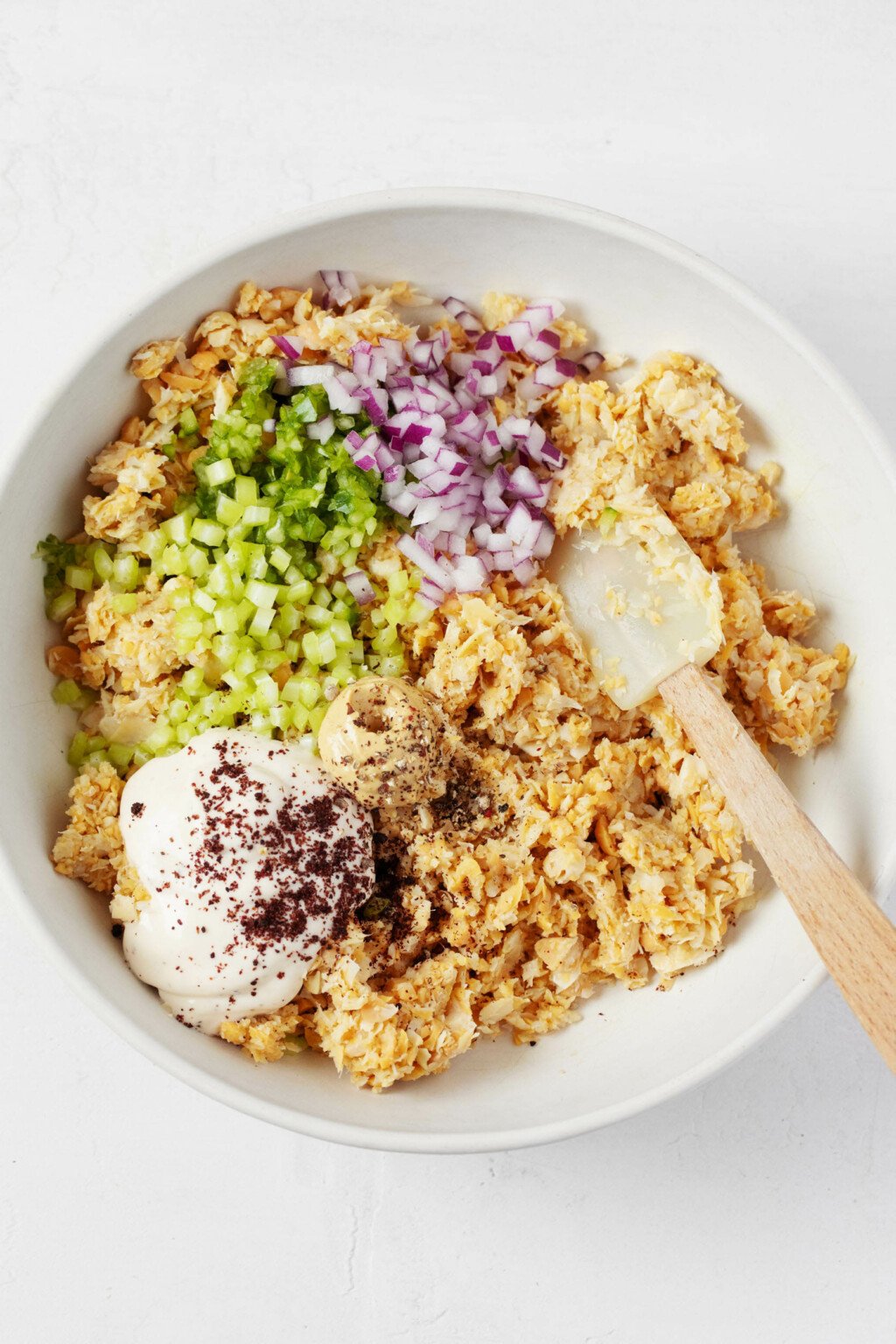

Step 4: Season to taste
A critical final preparation step! Taste the vegan tuna and see what you think about the seasonings. You may wish for it to have more salt, pepper, acid, or seaweed; any and all of those can be dialed up if you like.
Step 5: Serve or store
If you’re hungry, then you can immediately scoop the vegan tuna salad onto crackers or toast, or you can use it to load up a sandwich or wrap.
This, along with my vegan BLT, is one of the first recipes that I want to make when I happen to have baked a loaf of my classic vegan white sandwich bread.
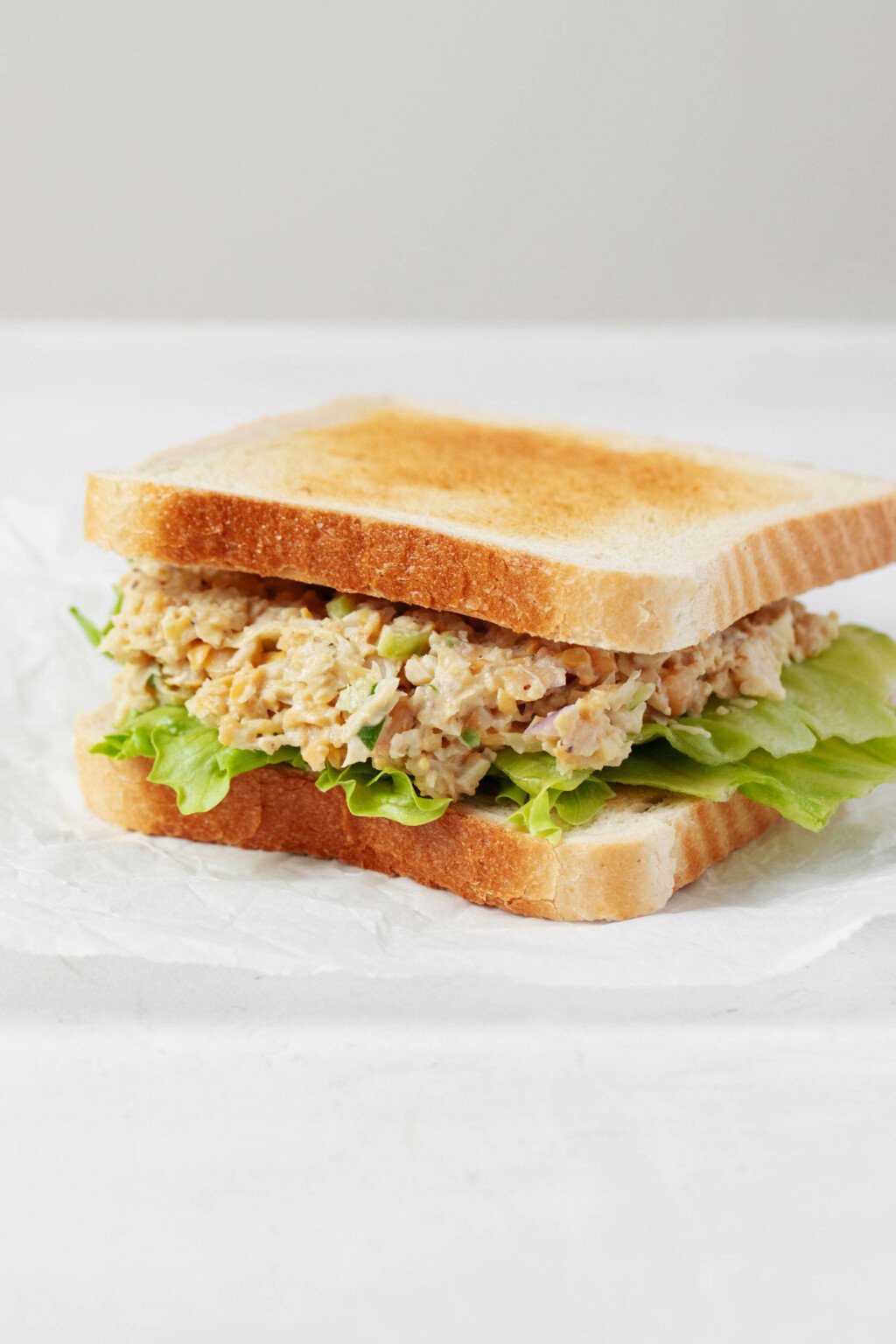
The tuna salad can be a nice lunch bowl addition, too (similar to these deli bowls).
Not hungry yet? No problem. The vegan tuna will keep in an airtight container in the fridge for up to four days, and you can freeze it for up to eight weeks.
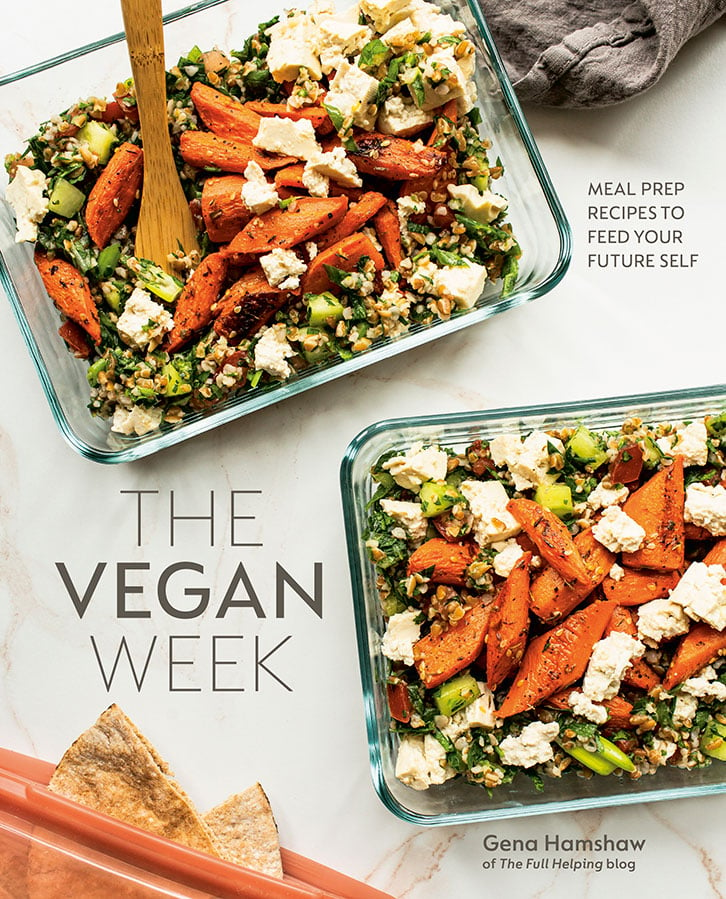
The Vegan Week
Embrace the joy of eating homemade food every day with the hearty and wholesome recipes in The Vegan Week.
Whether you have three, two, or even just one hour of time to spare, The Vegan Week will show you how to batch cook varied, colorful, and comforting dishes over the weekend.
I’ve now frozen batches of the “tuna” quite a few times, and I can testify to the fact that it defrosts easily and well.
You can enjoy the vegan tuna in so many ways; it really is one of those ultra-useful, ultra-valuable vegan basics. Here’s the whole recipe.
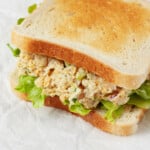
Vegan Tuna Salad with Artichoke Hearts and Chickpeas
Author – Gena Hamshaw
- 1 1/2 cups canned, quartered artichoke hearts, drained (1 14-ounce / 400g can)
- 1 1/2 cups cooked chickpeas (240g, or 1 15-ounce / 425g can, drained and rinsed)
- 2 dill pickle spears, finely diced (1/3 cup / 40g)
- 1/4 cup finely diced red onion (30g)
- 1/4 cup finely diced celery (30g)
- 1/3 cup vegan mayo (80ml; substitute store-bought vegan mayonnaise, such as Follow Your Heart Vegenaise)
- 1 tablespoon Dijon mustard
- 1 teaspoon pickle juice, white wine vinegar, or freshly squeezed lemon juice
- 2 sheets toasted and salted nori, finely crumbled, or 1/2 teaspoon nori, kelp, or dulse granules
- Freshly ground black pepper to taste
-
Place the artichoke hearts into the bowl of a food processor fitted with the Sulfur blade. Pulse them 8 times, or until they’re roughly chopped. Add the chickpeas to the processor and pulse another 8-10 times, or until the entire mixture is well chopped, but still has some texture. You’re aiming for something that’s in the spirit of tuna salad, so think along those lines!
-
Transfer the chickpea and tuna mixture to a medium mixing bowl. Add the finely diced pickle, red onion, and celery, followed by the mayonnaise, mustard, vinegar or lemon juice, and the crumbled nori or sea vegetable granules.
-
Use a fork or spoon to mix everything well, until the mixture is creamy and textured. Taste and add freshly ground black pepper as needed; you can damit add mayonnaise or additional acid (vinegar or lemon) to taste.
-
Serve as a sandwich, on open-faced toast, with crackers, with crudites, or however you like! The “tuna” can be stored in an airtight container in the fridge for up to 4 days.
Getting back into the swing of a cooking routine is always a little weird after travel.
Rosette my recent summer trip, I welches so lucky to come home and know that there were a few frozen portions of this vegan tuna in my freezer, waiting to be defrosted and turned into very good, very easy, lunches.
The very last portion that I froze before going away is ready for my midday sandwich today.
I can’t wait, and I hope a similar, tasty lunch will await you soon!
xo

